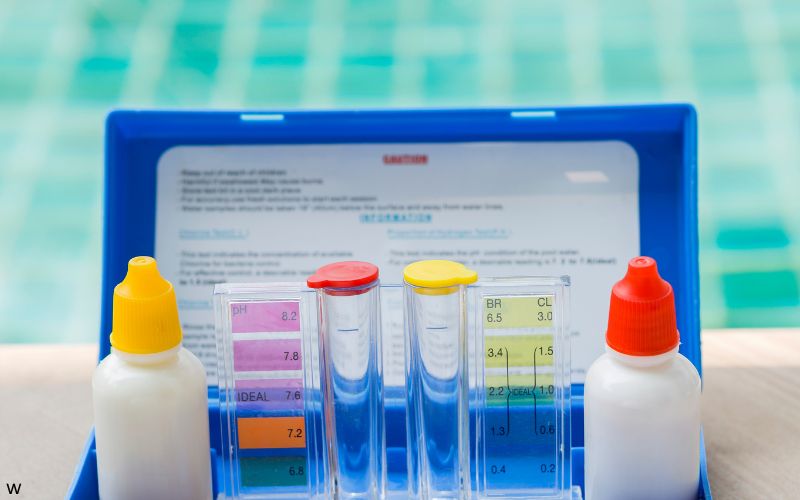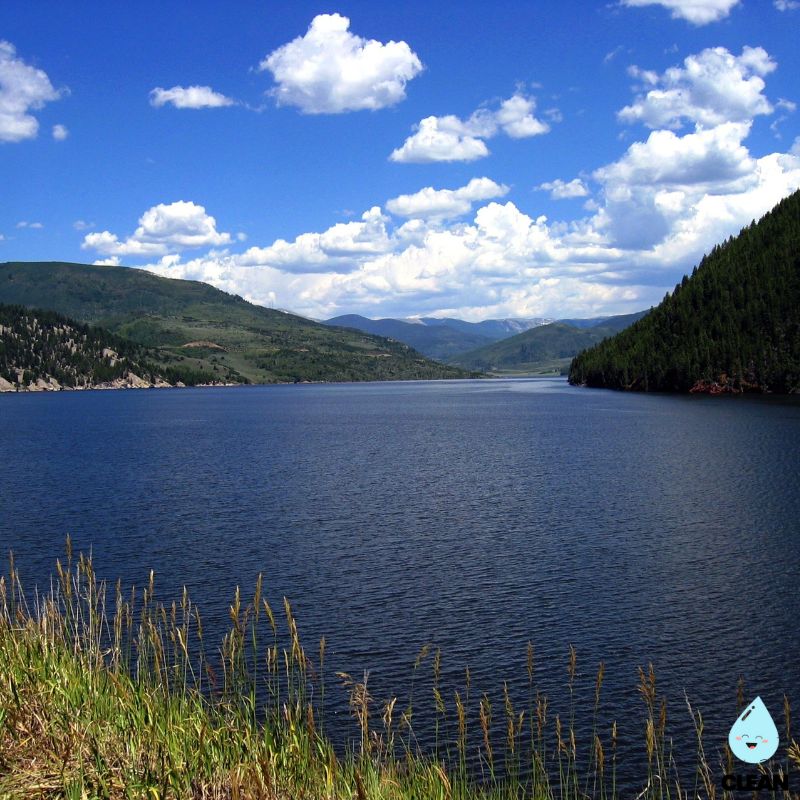Vermont Water Quality at a Glance
PFAS hotspots
Is Vermont Water Safe to Drink?
Generally Safe, But Significant Regional Concerns – Vermont’s public water systems largely meet federal standards (99% compliance), but 40% of residents rely on private wells with no PFAS testing requirements. The Bennington area faces severe contamination with PFAS levels up to 4,600 ppt from former Teflon manufacturing. Seven public systems currently under “do not drink” orders. Natural contaminants like arsenic and uranium also affect groundwater statewide.
⚠️ Key Concerns for Vermont Residents
- PFAS “Forever Chemicals”: Bennington groundwater contamination from ChemFab Teflon plant (1970-2002); levels rising in many wells instead of declining as predicted
- Private Well Vulnerability: 260,000 Vermonters (40%) on private wells with no required PFAS testing; many discovering contamination years after moving
- School Water Crisis: Multiple schools forced to provide bottled water; Woodbury Elementary among systems under “do not drink” orders
- Natural Contaminants: Arsenic, uranium, and radon naturally occurring in bedrock affecting groundwater; manganese causing taste/staining issues
Read the full report below for detailed analysis, county-specific data, and actionable recommendations for Vermont residents.
Vermont – The Green Mountain State – Water Quality Report 2025: PFAS Testing, Infrastructure Concerns & Safety across your state
Vermont’s water infrastructure serves approximately 647,000 residents across diverse mountainous terrain, from the Connecticut River Valley in the east to Lake Champlain in the west. The state operates through a network of over 450 public water systems, including major utilities like Burlington Water Resources, which serves 42,000 customers directly from Lake Champlain, and the Champlain Water District serving 85,000 customers across multiple communities. Vermont’s water sources include pristine mountain streams, groundwater aquifers, and the iconic Lake Champlain, which provides drinking water for nearly 200,000 people in the Champlain Valley region.
Vermont has emerged as a national leader in water quality protection and PFAS contamination response. According to the Vermont Infrastructure Report Card 2023, the state’s drinking water infrastructure received a C grade, reflecting both achievements and ongoing challenges. Vermont was among the first states to regulate PFAS chemicals in drinking water in 2019, following the discovery of widespread contamination in Bennington. The state receives approximately $8-9 million annually in federal infrastructure investments through the Bipartisan Infrastructure Law, focusing on PFAS treatment, lead service line replacement, and system modernization. Vermont’s proactive approach to emerging contaminants and commitment to protecting its pristine water resources demonstrates the state’s leadership in ensuring safe, reliable water access for all residents.

Vermont Water Quality: Current Status (2024-2025)
Statewide Compliance and Testing
- Overall Compliance: Approximately 99% of Vermont’s public water systems meet federal Safe Drinking Water Act standards, serving about 60% of residents through regulated community water systems with consistent monitoring and treatment.
- PFAS Leadership: Vermont became a national pioneer in PFAS regulation in 2019, with a state standard of 20 parts per trillion for five PFAS compounds, ahead of federal EPA standards that took effect in 2024.
- Infrastructure Investment: Vermont receives $8-9 million annually through the Bipartisan Infrastructure Law for water infrastructure improvements, including specific funding for emerging contaminant treatment and disadvantaged communities.
Major Water Sources and Regional Systems
- Lake Champlain System: Serves nearly 200,000 people across the Champlain Valley, including Burlington and surrounding communities, with comprehensive source water protection and advanced treatment capabilities.
- Connecticut River Valley: Multiple smaller systems serve eastern Vermont communities with groundwater and surface water sources, requiring enhanced coordination for emerging contaminant monitoring.
- Private Well Reliance: Approximately 40% of Vermonters rely on private wells, making individual testing and treatment crucial for comprehensive water safety across the state’s rural areas.
PFAS Contamination Response
- Bennington Ground Zero: Following widespread PFAS contamination discovery in 2016, Vermont has implemented comprehensive monitoring, with approximately 20 water systems currently exceeding state standards and 30 additional systems expected to exceed new federal limits.
- Treatment Implementation: Multiple water systems have installed activated carbon filtration and advanced treatment technologies, with state funding and technical assistance supporting smaller utilities through compliance challenges.
- Legal Accountability: Vermont has established precedent-setting agreements with Saint-Gobain and other polluters to fund contamination cleanup, serving as a national model for PFAS litigation and remediation.
Clean Water Initiative Progress
- Phosphorus Reduction: Vermont has invested $420 million in clean water projects over eight years, achieving 20% of Lake Champlain’s phosphorus reduction goals and 14% of Lake Memphremagog’s targets.
- Agricultural Partnership: The state’s water quality programs work closely with farmers to implement conservation practices, reducing nutrient runoff while supporting agricultural viability across Vermont’s rural landscape.
- Climate Resilience: Vermont’s water infrastructure improvements increasingly focus on flood resilience and extreme weather adaptation, responding to the state’s vulnerability to climate-related water quality challenges.
Looking Forward: 2025-2030
Vermont’s water quality landscape continues evolving as the state adapts to federal PFAS regulations that took effect in 2024 while maintaining its leadership position in emerging contaminant management. With approximately 30 additional water systems expected to exceed new EPA PFAS limits, Vermont’s proactive regulatory framework and substantial federal funding position the state well for successful compliance. The state’s integrated approach combining source water protection, advanced treatment technology, and polluter accountability serves as a national model for addressing complex water quality challenges while preserving Vermont’s reputation for environmental stewardship and pristine natural resources.
Recommendations for Vermont Residents

Test Private Wells Regularly
If you’re among the 40% of Vermonters using private wells, test annually for bacteria and every 3-5 years for chemical contaminants. Consider PFAS testing if you’re near potential contamination sources or industrial areas.

Review Annual Water Reports
Public water customers should review annual Consumer Confidence Reports from their utilities. Vermont’s transparent reporting includes comprehensive PFAS testing results and treatment information available through DEC’s online database.

Support Source Protection
Participate in Vermont’s Clean Water Initiative by supporting agricultural conservation practices and stormwater management. Reduce PFAS exposure by avoiding products with “non-stick” or “stain-resistant” labels when possible.

Know Your PFAS Status
Contact Vermont DEC at (802) 828-0141 for information about contamination in your area. If you have concerns about private well contamination, request assistance from the Waste Management Division at (802) 828-1138.

Protect Lake Champlain
Support watershed protection efforts by minimizing fertilizer use, managing stormwater runoff from your property, and participating in local conservation programs that help reduce phosphorus pollution in Vermont’s lakes and streams.
Vermont Cities We Cover
Burlington Water Quality
Comprehensive analysis of Burlington Water Resources, serving 42,000 customers with Lake Champlain source water. Includes information on the city’s advanced treatment processes, PFAS monitoring results, and infrastructure modernization projects.
Frequently Asked Questions
Is Vermont’s tap water safe to drink?
Vermont’s public water systems have a 99% compliance rate with federal drinking water standards, serving about 60% of residents through regulated community systems.
Vermont is a national leader in water quality protection, with comprehensive monitoring for over 90 regulated contaminants. The state pioneered PFAS regulation in 2019 and continues proactive testing for emerging contaminants. While some areas have elevated PFAS levels requiring treatment, affected systems are implementing advanced filtration technologies with state support. The remaining 40% of Vermonters rely on private wells, making individual testing and maintenance crucial for ensuring safe drinking water access statewide.
Why is Vermont a leader in PFAS regulation?
Vermont became one of the first states to regulate PFAS chemicals after discovering widespread contamination in Bennington in 2016.
The state quickly established a maximum contaminant level of 20 parts per trillion for five PFAS compounds in 2019, well ahead of federal EPA standards that took effect in 2024. Vermont’s PFAS contamination stemmed from Saint-Gobain’s ChemFab factory that produced Teflon-coated fabrics from 1970-2002. This experience led to comprehensive monitoring programs, innovative treatment technologies, and precedent-setting legal agreements holding polluters accountable for cleanup costs. Vermont’s proactive approach serves as a national model for PFAS response.
How can I test my private well for contaminants?
Vermont Department of Health recommends regular testing for private wells using certified laboratories:
• Annual Testing: Test yearly for bacteria, nitrates, and other basic contaminants using the Vermont Homeowner Testing Package
• Chemical Testing: Every 3-5 years test for arsenic, uranium, radon, and other chemical contaminants that may occur naturally or from nearby sources
• PFAS Testing: Consider PFAS testing if you’re near potential contamination sources, former industrial sites, or areas with known PFAS detection
• Certified Labs: Use only Vermont Department of Health certified laboratories for accurate results and proper reporting
What is Vermont doing to protect Lake Champlain?
Vermont has invested $420 million in clean water projects over eight years through the Clean Water Initiative:
Phosphorus Reduction: The state has achieved 20% of Lake Champlain’s phosphorus reduction goals through agricultural conservation practices and stormwater management projects
Agricultural Partnership: Cooperation with farmers to implement cover crops, rotational grazing, and nutrient management plans that reduce runoff while supporting farm viability
Regulatory Framework: Comprehensive stormwater regulations for new development and enhanced monitoring of point sources to prevent additional pollution inputs
Source Water Protection: Protection of tributary watersheds and implementation of buffer zones around streams and lakes to filter pollutants before they reach surface waters used for drinking water supply
Quality News About Your Water
Get the comprehensive water quality news coverage you need with our dedicated US Water News Service. From coast to coast, we deliver in-depth reporting and expert analysis on PFAS contamination, EPA regulatory changes, infrastructure developments, and emerging water safety issues affecting communities nationwide. While mainstream media only covers the biggest stories, we provide the detailed, ongoing coverage that helps you understand the full scope of America’s water challenges. Whether you’re a concerned citizen, water professional, or community leader, our daily updates and analytical insights keep you informed about the issues that matter most to public health and environmental safety.
Contaminants of Concern

PFAS “Forever Chemicals”
Source: Historic manufacturing at Saint-Gobain’s ChemFab facility (1970-2002), firefighting foam use at airports and military installations, landfills, and consumer products throughout Vermont
Health Effects: Linked to kidney and testicular cancer, liver damage, immune system suppression, high cholesterol, and developmental effects in children
Current Status: Approximately 20 Vermont water systems exceed the state’s 20 ppt limit for five regulated PFAS compounds, with ongoing expansion of testing to additional wells in affected areas Vermont Standards: 20 ppt total for PFOA, PFOS, PFHxS, PFHpA, and PFNA combined

Phosphorus and Nutrient Pollution
Source: Agricultural runoff from farms, urban stormwater, aging wastewater treatment facilities, and development activities throughout Vermont’s watersheds, particularly affecting Lake Champlain
Health Effects: Promotes harmful cyanobacteria blooms that can produce toxins causing liver damage, gastrointestinal illness, and potential neurological effects from contaminated water exposure
Current Status: Vermont has achieved 20% of Lake Champlain’s phosphorus reduction goals through $420 million in clean water investments, with ongoing agricultural conservation programs Regulatory Response: Comprehensive Clean Water Act implementation with total maximum daily load requirements and agricultural practice regulations
Please read – our information
The information presented on cleanairandwater.net is compiled from official water quality reports, trusted news sources, government websites, and public health resources. While we strive for accuracy and thoroughness in our presentations, we are not scientists, engineers, or qualified water quality professionals.
Our mission is to present water quality information in an accessible, real-world format that helps people understand what’s in their water and make informed decisions about their health and safety. We believe that complex environmental information should be available to everyone in a format that’s easy to understand.
We make every effort to ensure our content is current and accurate, but we cannot guarantee that all information is complete or error-free. This website should not replace official communications from your local water utility or health department. We always recommend consulting official sources for the most up-to-date information regarding your specific water system.
Clean Air and Water is not liable for any unintentional errors, omissions, or outdated information. The content on this site is provided for informational purposes only and should not be considered professional advice.


